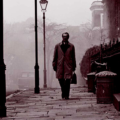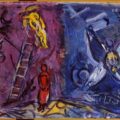A Feminist Ontology of Ooziness: On Kim Hyesoon

All the Garbage of the World, Unite!
by Kim Hyesoon
translated by Don Mee Choi
Softcover, $16.00
Action Books, 2011
Kim Hyesoon’s 132-page translated collection All the Garbage of the World, Unite! contains a poetry that is not built on metaphysical or metaphoric associations. An object, image, or process does not have to carry the weight of transmigration to or from another. No coherent, unified meaning about the nature of spirit and its existence in our physical bodies and our conquered and conquering nation-bodies are revealed in this collection (though for an attentive reading of how spirit inundates Kim’s reified landscapes see Tim VanDyke’s “This is the Ek-Static City: Thoughts on Kim Hyesoon’s Poetry and Poetics” in HTMLGIANT). Hacked open, bled, stained, dropped onto and into, peeled back, merged with, eaten up, shit on, devoured, tortured and nurtured by one another, sometimes all at the same time, sometimes in recurring cycles, things in these poems work and are worked upon by other things:
Under the faucet a man peeled a woman’s skin
The woman cacklecackled and peeled easily like an onion
As a layer of dark night peeled off transparent day soared
Blood draindrained down a pipe
Like the mushy inside of a fresh egg
Someone cried, stopitstopit why are you all acting this way?
When day gets suckled the sadtastingspicytasting night soars
Day and night kept this up for a thousand ten thousand years, for all
eternity
yet the woman peeled layerafterlayer…
After I was all peeled like an onion, I wasn’t there anymore
but the I that used to call me I was hiding somewhere
Night hid and trembled under the wood floor after taking its spicy skin
yet the sea endlessly took off and put on a pair of pants
and yet it was hotinsummer and coldinwinter and everything drifted away
isn’tthisthemostbeautifulstoryintheworld?
The image of a man peeling a woman’s skin like an onion is as brutal as an image can be. However, in the next line, the victimized woman is “cackling” like a witch able to outlive her torture. Later, night and day peel each other in a form of sexual act, as processes that evoke fear and vulnerability, but that also resuscitate, revive, and transform. Seasons and oceans drift and change, eroding one another. Natural bodies engage in other misassigned behaviors that likewise peel away both subject and object. A mountain acts like a Buddhist monk, a mother, and a killer. The ocean acts like a lover. “The sea endlessly took off and put on a pair of paints,” in a perpetual act of getting dressed for the world and undressed for bed, or in, the way lovers might cumulatively, over years, prepare for and mark the completion of love making.
When the “I” is “all peeled like an onion,” brutally but blissfully, the older self is hiding but not gone. The “I” of the speaker resonates with the woman who has been peeled. All the “I”s are present, even the ones discarded. All the “I”s have been acted on viciously, and have created a resonance of multiple and varying “I”s including the one that is revealed in an empty, unattached state of calm.
“isntthisthemostbeautifulstoryintheworld” asks the poem. Drafted as a word-phrase, compacted in on itself, it is the kind of lightning-quick phrasing that’s heard in everyday discourse, derived from fairy tale messages about women, gender, and power. It is the quintessential storybook happy-ending. Is this line another voice? Is it a Greek chorus underscoring or obliterating the earlier voice that cries, “stopitstopit why are you all acting this way?” Are both of these voices the same commodified, disembodied utterance of a hegemonic social order where women are skinned alive and we like to think of this as love? Or is there something truly blissful about the act of being peeled into nothingness and drifting away? Either way, the narrative undertaking succeeds at revisioning the victim away from victimhood and into her own transforming selfhood(s).
Among other masterful balancing acts, Kim’s poems perform non-hierarchical, non-binary choreographies that defy the construct of victim/perpetrator. They achieve this without losing her clear gaze at power, and its instrument of torture on the physical body/ies of people, animals and land.
All throughout, Kim outlines the devaluing of women: through the identities assigned to them as sexual object, producer of children, care-giver, ghost, “meme is a lone tree that got planted in a bed…meme is a lone tree that can’t go and die on her own”; through the tendency toward numbing internalized oppression, “I need to wash my face with a soap named despise”; alongside the ache for revenge in matters of maintaining the status quo and permeating inequality, “I need to grow my fire hair again/I need to go out and kill myself again”; through the body as both a concrete, contained entity and a vehicle for spirit, transformation, and immortality, “She becomes a hawk by day/and he becomes a wolf by night/We pass each other like knife blades”; through reckless patriarchal and capitalist greed manifesting in every aspect of our relationships, “Even the bones of the snowman got stolen from the grave”; and through the discourses of the female and marginalized body as the site of such exploitive enactments, “The ground is ill, I won’t be able to walk/The sky is ill, I won’t be able to breathe either/The blood that circulates throughout my body is ill/I won’t be able to live.” All these observations are presented through finely-tuned and sensitized forces, resonating against each embodied rawness to produce dissonant sound waves of music and noise.
What could calm us is what disrupts. Even the Buddha is suspect: “The instant a tranquil smile lands on Buddha’s face/I can see a mouse being chewed up inside Buddha’s lips.” What is most disruptive has the potential to free us.
In the opening stanza of the title poem, the “you” of “bourgeoisie communication” mitigates or “screens” the “I.” The “you” is a messy and selfish leaving, “two beer bottles, a cigarette butt, two pieces of scratch paper,” positioned as an objectificator of the “I.” “When you look at me, I always feel as if I should change into something else”. If being seen is being loved, as it has been said, then perhaps being seen and being inaccurately labeled is something else. Kim’s poetry brings new blood to this discussion.
Though these works are about the nature of colonization and objectification, objects and subjects refuse to act within victim/perpetrator binaries. The “I” is an excitingly active/activated, un-deadened, and de-objectified force. The typically demarcated lines between death and life, decay and abundance, freedom and oppression, are less pronounced. The prose-poem meditation on the hellish relationship between torturer and tortured, “My Throat Has Become a Candlestick” moves like a reverie, and the last line punctuates the causality of that relationship:
When I lie and wait at the riverside it’s my turn again, the river cleans my body, the heedless wind blows in and makes my white sleeves flutter, my tears dry up, you have washed your hair and have a white towel wrapped around your neck, you lift me up to the bed of flames, you pour butter down my throat and place a wick in it, you light the wick, my throat has become a candlestick, my organs burn up like beeswax, green flames shoot out from my mouth…why do you poke at my thigh with a skewer?/why do you beat down on my head?/ So you’ll burn well.
Kim’s poems move inward—toward cellular, atomic particle matter—and outward—toward infinite black space—simultaneously. The narrative arc of the poems are generous in their inclusivity and their refusal to privilege one way of seeing, being, or moving over another. Eventually, through the restriction of language, the net of the poem tears. The process that is constantly changing has to end, sometime violently, sometimes playfully, sometimes randomly. These ends echo an infinity of being. They move beyond the man-made, one-dimensional construct of word, line, page, book. This tension between the amorphous, ever-expanding helixes of creation and the reification of the page underpins the vibrancy of the work. In her preface, taken from a talk at the American Literary Translators Association Conference in 2006, the poet addresses her multiple, varying “I’s”:
I am many inside my poetry. “I” as a subject, the cognizant “I” is deconstructed. I have never once lived as a single “I” inside poetry. The confusion of the multiple “I” is what makes me write poetry. I am a mother, a young unmarried woman, an angel, a prostitute. I am an infant just born, an old woman near death. When I am a mother, “I” the young unmarried woman is ill, and when I am a young woman, the mother is ill. Like the children who defy school and run out of the gate, multiple “I’s” dangle from the open skirt of the Buddhist Goddess of Mercy. “You” inside poetry also dangles from the skirt (from Preface: In the Oxymoronic World. X).
This is how interconnected and spastic this creation story is, and how scientifically precise, at least within the DNA of this organism. Flip-flopping power identity rearrangements are exposed through a study of the grotesque patriarchal and colonized bodies we occupy: land, house, self (see Ruth William’s “The Female Grotesque,” Jan. 1, 2013 with Kim in Guernica). Subjects become their own emptied, essential selves through the perpetual morphing into other forms of being.
The incantatory final poem of the collection, “Manhole Humanity,” is composed of short sections that are separated visually with “O” icons. Previously published as its own body of work in 2009, this seventeen-page poem is more pedantically and thematically driven than the others. In the final ode in the collection, we hear the chant of a post-Ginsberg psychedelic prayer of the graphic body. The poem screams out a world of black, empty, “holeyness”, a fabric of holes and fragments (not unlike the frayed fabric dress on the cover, made of locked lips that demand to be opened so a hungry tongue can playfully and violently emerge).
“Manhole Humanity” celebrates the incomplete, dark, swallowing chaos of pre-ordered creativity. It honors the porous body, the porous earth, while also paying homage to the violence of historical wounding, the very real “250,000 pounds of napalm per day that were dropped by the United States forces [onto Korea]… [resulting in] countless mountains, hills, rice fields, and houses [being] turned into holes. Four million perished, leaving more holes.”
“…the empty, holey/holy, dissected space like the empty space inside a flame…the inside of a blood sausage” has brought us everywhere that such blood-thirsty, blood-letting journeys go. Like all sacred texts, All the Garbage of the World, Unite! enacts and contains its own ontological ground. Luckily for us, Kim’s work has finally been venerated in her first tongue, Korean, and perfectly translated into its English-language body of being. All the Garbage of the World, Unite! lets you become what you eat—the poison and love in the air, earth, sun, water and sky. Be drawn into the tortured narrative that wears a gutsy sense of humor, and become eviscerated by it. Never feel so clear about the beauty and horror of experience, living together in garbage land with all of our guts hanging out and drying. This is an invitation.





